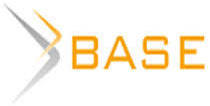Healthy lifestyle blogging as a factor in student nutritional programming
The most vulnerable category in relation to the influence of Internet technologies on the formation of both the system of values and guidelines in nutrition is young people who in their thinking use images that they see from the pages of social networks. Virtual content is of high importance in building communications by the younger generation. The pertinence of the study stems from the impact of healthy lifestyle blogging on subscribers, most of whom are students, due to which there are changes not only in the ideology of nutrition, but also in the food programming of the latter. The study was carried out by the method of secondary sociological analysis, as well as the analysis of scientific sources and statistical data with their subsequent interpretation. The idealization of healthy lifestyle blogging by students is noted, which becomes one of the main factors in the negative food programming of students. The degree of impact of healthy lifestyle blogging depends on the age category of content consumers. There is a high interest in healthy lifestyle blogs among the younger generation. The specificity of the negative impact of healthy lifestyle blogs on students' food programming lies in the low critical assessment of information presented by non-specialists as the ultimate truth, the main criterion for the truth of which is the number of subscribers.

















While nobody left any comments to this publication.
You can be first.
Bakk, A. S. (2016), “Gesunde Ernährung und Blogs – Die Motivation der цsterreichischen Bloggerinnen”, Аngestrebter akademischer Grad [Desired academic degree], 49-51 (in Germ.).
Goffman, E. (1963), Stigma: Notes on the management of spoiled identity, Prentice-Hall, N.Y.
Folts, A. O. (2020), “Use of manipulation techniques by popular Instagram bloggers in Russia (on the example of healthy lifestyle topics)”, Media in the modern world, 2, 219-220.
Kelina, M. Yu., Marenova, E. V., Meshkova, T. A. (2011), “Dissatisfaction with the body and the influence of parents and peers as risk factors for eating disorders among adolescent and adolescent girls”, Psychological Science and Education, 16 (5), 44-51 (in Russ.).
Kulpin, S. V., Savchuk, G. A., Yakimova, O. A. (2020), “Why does youth represent content about a healthy lifestyle: a factor analysis of public opinion”, Monitoring of Public Opinion: Economic and Social Changes Journal, 2 (156), 168-190 (in Russ.).
Lisenkova, A. A., Melnikova, A. Yu. (2017), “Social networks as a factor of active influence on the formation of youth values”, Liberal Arts in Russia, 4, 322-329 (in Russ.).
Lisina, O. V. (2016), “Construction of a healthy lifestyle image by Russian youth in the social network photo service Instagram: real and virtual health-saving practices”, Sustainable development management, 4, 78-83 (in Russ.).
Maksimushkina, E. A, Verina, T. P. (2016), “The influence of modern mass media (the Internet and social networks in particular) on the change in the concept of "healthy lifestyle" among young people”, Science, education and culture, 11 (14), 59-60 (in Russ.).
Matusevich, M. S. (2013), “Features of the formation of food disorders in adolescents”, Molodoy ucheny [Young scientist], 12, 814-817 (in Russ.).
Mete, R., Curlewis, J., Shield, A., Murray, K., Bacon, R. and Kellett, J. (2019), “Reframing healthy food choices: a content analysis of Australian healthy eating blogs”, BMC public health, 19 (1), 1-9 [Online], available at: https://doi.org/10.1186/s12889-019-8064-7 (Accessed 23 November 2021).
Moorhead, S. A., Hazlett, D. E., Harrison, L., Carroll, J. K., Irwin, A. and Hoving, C. A. (2013), “New dimension of health care: systematic review of the uses benefits, and limitations of social media for health communication”, Journal of Medical Internet Research, 15 (4) [Online], available at: https://doi.org/10.2196/jmir.1933 (Accessed 23 November 2021).
Muris, P., Meesters, С., Blom, W. De and Mayer, B. (2005), “Biological, psychological, and sociocultural correlates of body change strategies and eating problems in adolescent boys and girls”, Eating behaviors, 6 (1), 11-22 [Online], available at: https://doi.org/10.1016/j.eatbeh.2004.03.002 (Accessed 23 November 2021).
Nikolaeva, N. O, Meshkova, T. A. (2011), “Eating disorders: social, family and biological prerequisites”, Mental Health of Children and Adolescent, 1 (11), 39-49 (in Russ.).
Sarna, A. Ya. (2016), “Basic communication strategies of users of social networks and tools for their implementation on the Internet”, Philosophy and Social Sciences, 2, 9-17 (in Russ.).
Stoyanov, A. S., Shestopalova, P. V. (2021), “Economic Independence as a Factor of Student Academic Performance”, Humanitarian researches of the Central Russia, 1, 78-87 (in Russ.).
Yushkina, N. A., Panarina, M. A. (2019), “Features of the discursive environment as a source of meaning creation in online communication (for example, social networks)”, Digital Sociology, 2, 25-33 (in Russ.).